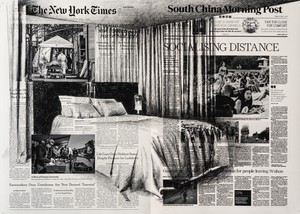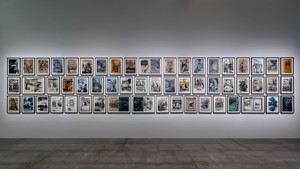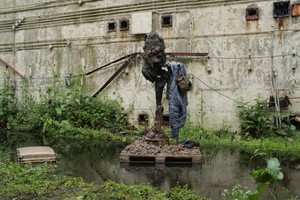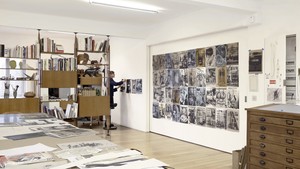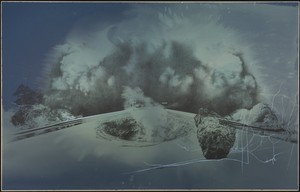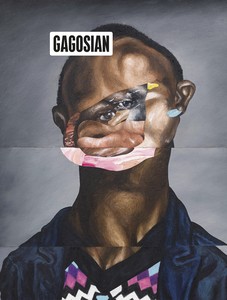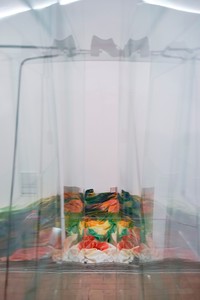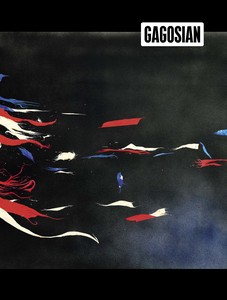When the quarantine was announced, newspapers from countries around the world being ravaged by the pandemic took on new meaning. I began, each day, to draw on the front page of a paper—it was a way of escaping the confinement, and of being connected to the strange atmosphere that was spreading around the globe with the virus. This world tour via headlines and front pages was like a journey in reverse. Suddenly, I could no longer meet the world unless the world came to me, through the newspapers. Governments and leaders around the world should have seen this as an opportunity to reconsider our societal and economic models. But no. This crisis has only heightened my anger at the inequalities we accept daily, and at the contempt we show for our planet.
—Tatiana Trouvé
Click on image to view portfolio:
In March of 2020, when the novel coronavirus prompted a wave of lockdowns around the globe, Tatiana Trouvé began to draw. Each morning she began a new work atop the front page of a different international newspaper. This daily practice, she explained to me during a video call toward the end of the lockdown, was a way to travel around the world from within the confines of her studio. By bringing together the daily rhythms of publishing and the practice of drawing—which in her hands has a diaristic quality, and a relative speed compared with other traditional artistic mediums—Trouvé’s suite of fifty-six drawings captures the elasticity of time and its many different registers: its dynamic, elusive quality, its peculiarity, its equal ability to move quickly and not at all.
We tend to think of time as easily measurable, an unbroken, orderly flow from the past to the future. Yet as the theoretical physicist Carlo Rovelli notes, “What we call ‘time’ is a complex collection of structures, of layers . . . Times are legion: a different one for every point in space. There is not one single time; there is a vast multitude of them.” A state of exception creates a rupture in our sense of time, an uncanny zone. Here, elements of normalcy might mingle with an underlying sense of dread. A day might seem like an eternity, or what was once familiar might bristle with an overwhelming strangeness.
Throughout her thirty-year career, Trouvé has consistently grappled with fugitive temporalities, imperceptible movements that are either, as the artist explains, “too fast for us to gain a clear image of them” or “too slow for us to discern their movement.” Her recent engagement with newspapers highlights the temporality of the print format, as well as its endangerment—threatened not only by the decline of print media but by the proliferation of fake news in a “post-truth” era. As the circulation and morphing of information accelerates, particularly when following the trail of an international pandemic, a printed newspaper today may be outdated before it even hits the newsstands. Trouvé’s recent drawings therefore form a kind of time capsule, merging an official public narrative from a fixed moment with private, hermetic reflections from roughly the same time, and generating a dreamlike space in which different times and places coexist and are superimposed.
—Jesi Khadivi
